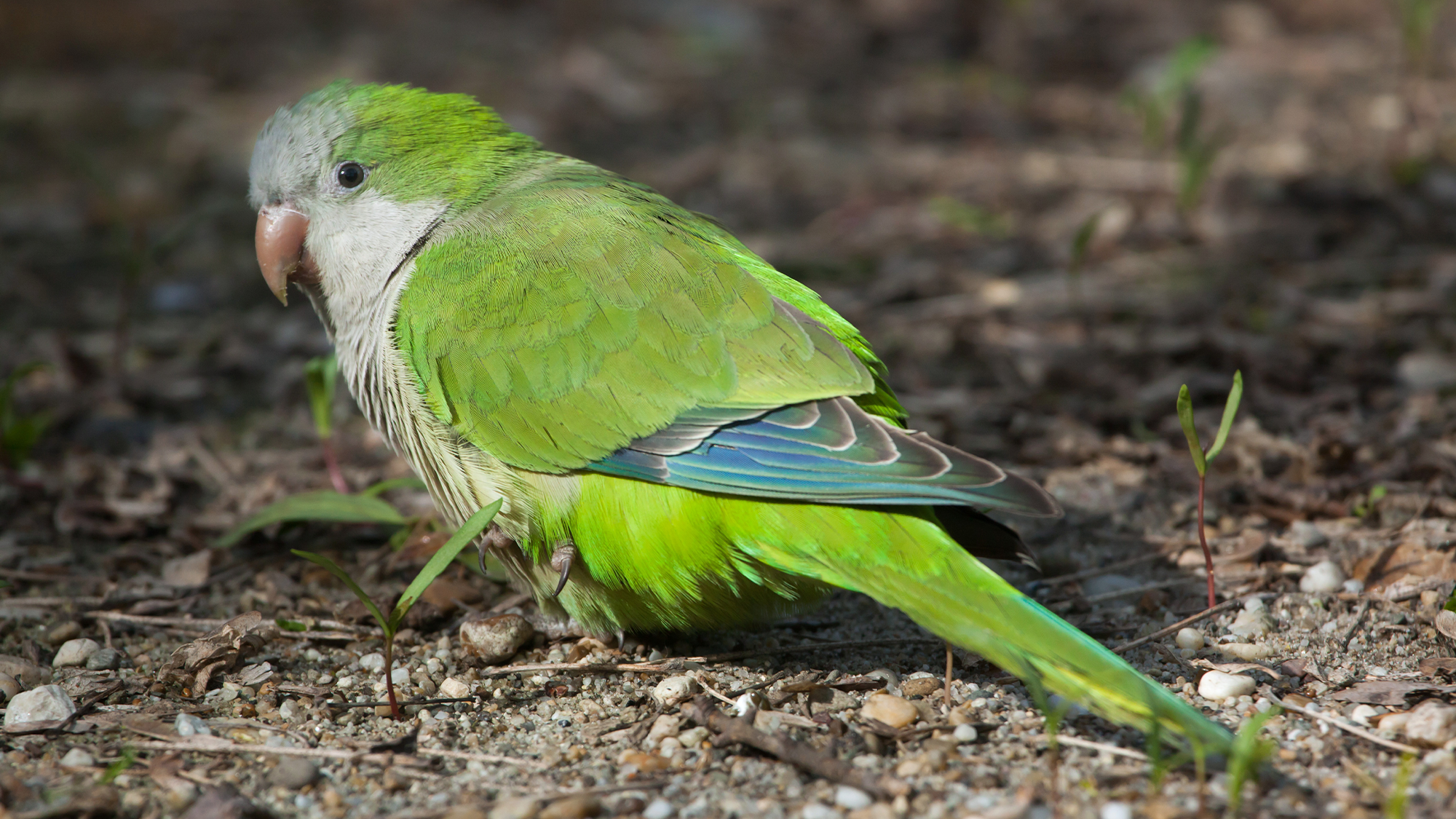

Parrots are the chatterboxes of the animal kingdom. These famously social birds can learn new sounds throughout their lives and even produce calls that can be individually recognized by other members of their flock. A new study of monk parakeets found that individual birds have a unique tone of voice similar to humans called a “voice print.” The findings are described in a study published October 3 in the journal Royal Society Open Science.
[Related: The next frontier in saving the world’s heaviest parrots: genome sequencing.]
“It makes sense for monk parakeets to have an underlying voice print,” Simeon Smeele, a co-author of the study and biologist studying parrot social and vocal complexity at the Max Planck Institute of Animal Behavior, said in a statement. “It’s an elegant solution for a bird that dynamically changes its calls but still needs to be known in a very noisy flock.”
In humans, our voice print leaves a unique signature in the tone of our voice across every word we say. These voice prints remain even though humans have a very complex and flexible vocal repertoire. Other social animals also use similar cues to recognize one another. Individual dolphins, bats, and birds have a “signature call” that makes them identifiable to other members of their groups. However, signature calls encode identity in only one call type, and there hasn’t been much evidence that suggests animals have unique signatures that last throughout their entire repertoire of calls.
Parrots use their tongue and mouth to modulate calls similar to the way humans speak. According to Smeele, “their grunts and shrieks sound much more human than a songbird’s clean whistle.”
Parrots also live in large groups with fluid membership where multiple birds vocalize at the same time. Members need a way to keep track of which individual is making what sound. The question became if the right physical anatomy coupled with the need to navigate complex social lives, helped parrots evolve a voice print.
In the study, Smeele and his team traveled to Barcelona, Spain—home to the largest population of individually marked parrots in the wild. The parakeets are considered an invasive species and they swarm Barcelona’s parks in flocks with hundreds of members. The Museu de Ciències Naturals de Barcelona has been marking the parakeets for 20 years and have individually identified 3,000 birds.
The team used microphones to record the calls of hundreds of individuals and collected over 5,000 vocalizations in total. They also re-recorded the same individuals over a period of two years, which revealed the stability of the calls over time.
Using a set of computer models, they detected how recognizable individual birds were within each of the five main call types given by this species (contact, tja, trrup, alarm, and growl). They found high variability in the “contact call” that birds use to broadcast their identity. According to the team, this overturned a long-held assumption that contact calls contain a stable individual signal. The new findings suggested that the parakeets are actually using something else for individual recognition.
[Related: These clever cockatoos carry around toolkits to get to food faster.]
To investigate if voice prints were at play, the team used a machine learning model widely used in human voice recognition. The model detects the identity of the speaker using the quality, or timbre, of their voice. The team trained the model to recognize calls of individual birds that were categorized as “tonal” in sound. They then tested to see if the model could detect the same individual from a separate set of calls that were classified as “growling” in sound. The model was able to identify the individual parrots three times better than expected, providing evidence that monk parakeets do actually have a recognizable, individual voice print.
While exciting, the authors caution that this evidence is still preliminary. Future experiments and analyses could use the parrot tagging work from the team in Barcelona. The GPS devices could help determine how much individuals overlap in their roaming areas.
“This can provide insight into the species’ remarkable ability to discriminate between calls from different individuals,” study co-author and ecologist from Museu de Ciències Naturals de Barcelona Juan Carlos Senar said in a statement.
